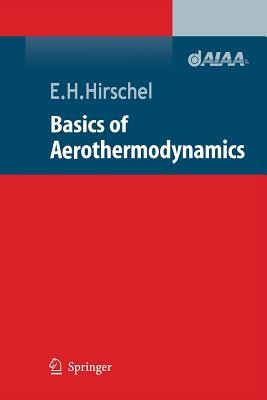
- We will send in 10–14 business days.
- Author: Ernst Heinrich Hirschel
- Publisher: Springer
- Year: 2010
- Pages: 413
- ISBN-10: 3642060501
- ISBN-13: 9783642060502
- Format: 15.5 x 23.4 x 2.5 cm, minkšti viršeliai
- Language: English
- SAVE -10% with code: EXTRA
Reviews
Description
The last two decades have brought two important developments for aeroth- modynamics. One is that airbreathing hypersonic flight became the topic of technology programmes and extended system studies. The other is the emergence and maturing of the discrete numerical methods of aerodyn- ics/aerothermodynamics complementary to the ground-simulation facilities, with the parallel enormous growth of computer power. Airbreathing hypersonic flight vehicles are, in contrast to aeroassisted re-entry vehicles, drag sensitive. They have, further, highly integrated lift and propulsion systems. This means that viscous eflFects, like boundary-layer development, laminar-turbulent transition, to a certain degree also strong interaction phenomena, are much more important for such vehicles than for re-entry vehicles. This holds also for the thermal state of the surface and thermal surface effects, concerning viscous and thermo-chemical phenomena (more important for re-entry vehicles) at and near the wall. The discrete numerical methods of aerodynamics/aerothermodynamics permit now - what was twenty years ago not imaginable - the simulation of high speed flows past real flight vehicle configurations with thermo-chemical and viscous effects, the description of the latter being still handicapped by in- sufficient flow-physics models. The benefits of numerical simulation for flight vehicle design are enormous: much improved aerodynamic shape definition and optimization, provision of accurate and reliable aerodynamic data, and highly accurate determination of thermal and mechanical loads. Truly mul- disciplinary design and optimization methods regarding the layout of thermal protection systems, all kinds of aero-servoelasticity problems of the airframe, et cetera, begin now to emerge.
EXTRA 10 % discount with code: EXTRA
The promotion ends in 22d.05:53:47
The discount code is valid when purchasing from 10 €. Discounts do not stack.
- Author: Ernst Heinrich Hirschel
- Publisher: Springer
- Year: 2010
- Pages: 413
- ISBN-10: 3642060501
- ISBN-13: 9783642060502
- Format: 15.5 x 23.4 x 2.5 cm, minkšti viršeliai
- Language: English English
The last two decades have brought two important developments for aeroth- modynamics. One is that airbreathing hypersonic flight became the topic of technology programmes and extended system studies. The other is the emergence and maturing of the discrete numerical methods of aerodyn- ics/aerothermodynamics complementary to the ground-simulation facilities, with the parallel enormous growth of computer power. Airbreathing hypersonic flight vehicles are, in contrast to aeroassisted re-entry vehicles, drag sensitive. They have, further, highly integrated lift and propulsion systems. This means that viscous eflFects, like boundary-layer development, laminar-turbulent transition, to a certain degree also strong interaction phenomena, are much more important for such vehicles than for re-entry vehicles. This holds also for the thermal state of the surface and thermal surface effects, concerning viscous and thermo-chemical phenomena (more important for re-entry vehicles) at and near the wall. The discrete numerical methods of aerodynamics/aerothermodynamics permit now - what was twenty years ago not imaginable - the simulation of high speed flows past real flight vehicle configurations with thermo-chemical and viscous effects, the description of the latter being still handicapped by in- sufficient flow-physics models. The benefits of numerical simulation for flight vehicle design are enormous: much improved aerodynamic shape definition and optimization, provision of accurate and reliable aerodynamic data, and highly accurate determination of thermal and mechanical loads. Truly mul- disciplinary design and optimization methods regarding the layout of thermal protection systems, all kinds of aero-servoelasticity problems of the airframe, et cetera, begin now to emerge.


Reviews